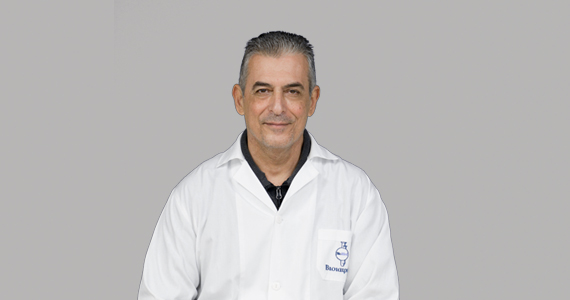
- Sexual responsibility is the key for the prevention of HIV
by Dr. Ιlias Βoutis*
Sexually Transmitted Diseases, also known as STDs, are a worldwide health issue. One of the most known STDs is the Acquired Immunodeficiency Syndrome or AIDS, which is caused by the Human Immunodeficiency Virus (HIV). HIV carries a single-stranded RNA as its genetic material, which main action is to trigger mechanisms that impede the production and release of CD4 T lymphocyte cells, therefore, the host is vulnerable to infections and other diseases. Since AIDS outbreak in the early 1980’s, nearly 84 million people worldwide have been infected with HIV, and about 40 million have succumbed and died to the illness.
HIV can be detected in all biological fluid of infected individuals (blood, semen, vaginal fluids, breast milk). Transmission, apart from sexual intercourse, includes blood transfusion or its agents, use of a contaminated syringe or non-sterile needle (tattoo or ear piercing), and from mother to fetus. The virus is not transmitted via everyday social encounters (hugging, cheek kissing, handshaking), sweat, saliva (except from the case when there are open wounds in the mouth), tears, and via wind or water. As far as mosquitoes’ bites and other insects are involved, opinions differ as there are no comprehensive studies that can prove whether the virus is transmitted or not.
Clinical picture- Symptoms
In 50 – 93% of cases the acute phase – first stage – is usually symptomatic. This is called an acute infection and begins within 2 to 6 weeks of exposure. There may be flu-like symptoms, infectious mononucleosis, pharyngitis with possible ulcerative lesions of the oral mucosa, swollen lymph nodes and skin rashes. It is highly likely, however, that symptoms do not occur. During the second stage, which can last for many years, the symptoms subside. HIV attacks CD4 T-lymphocytes, suppressing the immune system. During the third stage, the number of CD4 cells decreases dramatically resulting in the appearance of symptoms such as cachexia, weight loss, diarrhea, and recurrent infections. AIDS manifests itself in the last stage of HIV infection. It is remarkable that someone can be infected and not be aware of their condition, and therefore become a carrier for their whole life. The carrier does not manifest any symptoms and they are individual of social and professional activity.
Laboratory diagnosis
The main purposes of laboratory diagnosis are to identify people with HIV infection, to provide them with medical care, and to protect their environment. The main methods of laboratory diagnosis include the reliable and early detection of the genetic material of the virus (PCR), which detects the virus as early as the 1st month of the individual’s infection, and the late method of detecting the viral antigen in blood after three months of the initial infection, an option that provides answers after a long and precious period of time that the patient lived without treatment.
Then follows an asymptomatic phase of the disease, during which the virus is relatively inactive. This phase is called the latent period or incubation period of the disease and lasts on average 10 years. The incubation period ends with the reactivation of the virus, which results with the symptoms’ manifestation and ultimately, the clinical picture of the disease.
Treatment
The attending physician is responsible for choosing an appropriate antiviral treatment depending on the state of the immune system, the clinical picture, and the stage of disease’s diagnosis. The diagnosis of the acute phase though, is particularly challenging. About half of the cases are diagnosed after the progression of the disease. Early diagnosis and treatment mitigate the effects of the virus on the body and the disease becomes chronic. There is still no vaccine available against HIV, and there is no effective treatment for the disease, which is why patients are treated according to the clinical picture they present.
Prevention
Unfortunately, the efforts of awareness campaigns for HIV have been and are partially in vain, and therefore, there is still a prejudice about the disease and the carriers. As a result, many people avoid preventive and diagnostic tests, for fear of social exclusion. Nevertheless, the attending physician’s advice and consultation to both healthy individuals and carries for HIV is of utmost importance. The annual check of Sexually Transmitted Diseases in an ISO-accredited medical laboratory is considered equally necessary, as early diagnosis with validation of results by medical microbiologists and biopathologists and, of course, immediate treatment by the attending physician can prevent the progression of the disease and save lives. Sexual responsibility is the key for the prevention of HIV. It is always recommended to use a latex condom in every sexual intercourse. Condoms are effective when they are used from the beginning of the sexual act, are intact, of good quality and have not been exposed to light or heat for a long time.
*Biopathologist – Microbiologist, member of medical team of BIOIATRIKI Healthcare Group in Cyprus.









